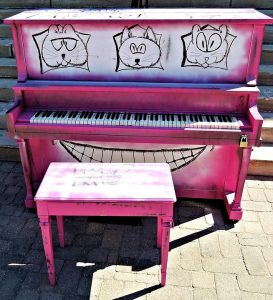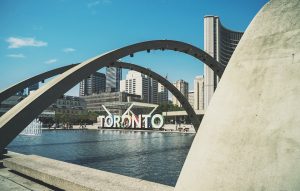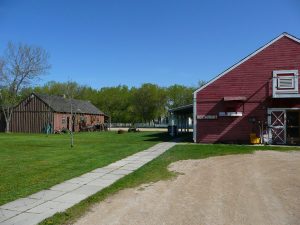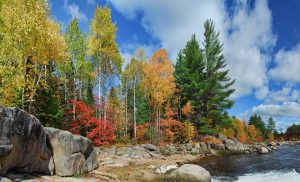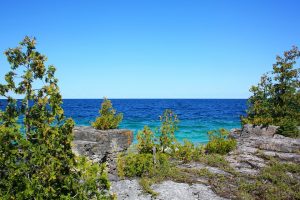Iqaluit Origins & Evolution
The history of Iqaluit, formerly known as Frobisher Bay, is fascinating and rich. The ancestors of the present-day Inuit people have inhabited the site for millennia, providing the region with a long-standing cultural ancestry. The city traces its founding back to the late 1940s when a U.S. airbase was established during World War II, the remnants of which still feature prominently in the city’s landscape today. By 1984 the city embraced its indigenous roots, changing its name from Frobisher Bay to Iqaluit, meaning “the place of many fish” in Inuktitut. Today, Iqaluit carries significant weight as the capital of Nunavut, the Canada’s youngest territory.
City’s Geography & Demography
Geographically, Iqaluit is positioned on Baffin Island, at the northeastern reaches of Canada, within the Arctic Circle. Its climate, therefore, is characterized by long, freezing winters and brief, cool summers. The cityscape offers a unique blend of rocky tundra and traditional Inuit living, situated by the icy wonder of the Frobisher Bay.
As of recent surveys, Iqaluit hosts a population of around 8,000. This community is richly diverse, with the majority being of Inuit descent, and an increasing non-Inuit, mostly of Euro-Canadian origins.
Cultural & Artistic Landscape in Iqaluit
Iqaluit holds an impressive array of cultural and artistic offerings. The annual Alianait Arts Festival is a city highlight, boasting music, dance, and visual arts from Inuit creators and other artists worldwide. There’s the notable Nunatta Sunakkutaangit Museum showcasing indigenous artworks and artifacts and the Nunavut Arts and Crafts Association, creating a conduit for local artists to showcase their work.
Educational & Research Facilities
Education is crucial to the city’s development, with Nunavut Arctic College being the primary institution offering a range of programs. In terms of research, there’s the Nunavut Research Institute, contributing significantly to the territory’s biodiversity and environmental studies. Libraries within the city include the Legislative Assembly of Nunavut Library, supplying residents with a wealth of information.
Iqaluit’s Highlights & Recreation
Outdoor enthusiasts can relish exploring snowmobile trails and dog sledding routes, while the Sylvia Grinnell Territorial Park supplies breath-taking views of the tundra. Meanwhile, the city’s vibrant Unikkaarvik Visitor Centre provides a comprehensive introduction to the history, culture, and wildlife of Nunavut. The architectural landmark of the city is certainly the St. Jude’s Cathedral, a modern version of traditional Inuit houses, symbolizes the fusion of local traditions with Christian beliefs.
Commerce & Conveniences
Despite its remote location, Iqaluit hosts numerous commercial businesses catering to residents and visitors. Ranging from Arctic Ventures Marketplace to the Road to Nowhere Pavilion offering various shops, banks, and postal services, these businesses make Iqaluit’s stay convenient. Seasonal sales events are readily celebrated, substantially enlivening the city’s atmosphere.
Transport & Connectivity
The primary means of transportation to Iqaluit is via air, with the city housing a busy airport, the Iqaluit International Airport, which connects with major Canadian cities such as Montreal Montreal Origins & Evolution Montreal's rich history dates back to 1535 when the indigenous Iroquois people welcomed French explorer Jacques Cartier. Officially founded in 1642 by French settlers, the city rapidly developed into an essential hub for fur trading. Montreal's spectacular growth continued over the centuries, transforming this quaint outpost into a dynamic metropolis. Today, the city's deep-rooted history is... and Ottawa
Montreal Origins & Evolution Montreal's rich history dates back to 1535 when the indigenous Iroquois people welcomed French explorer Jacques Cartier. Officially founded in 1642 by French settlers, the city rapidly developed into an essential hub for fur trading. Montreal's spectacular growth continued over the centuries, transforming this quaint outpost into a dynamic metropolis. Today, the city's deep-rooted history is... and Ottawa Ottawa Origins & Evolution The history of Ottawa, Canada's capital city, is rich and varied, evolving from a humble settlement of the early 1800s to the bustling modern city it is today. Originally known as Bytown after British military engineer Colonel John By, who was responsible for the construction of the Rideau Canal, the city's pivotal role within the nation's.... Within the city, taxi service is the primary public transportation means.
Ottawa Origins & Evolution The history of Ottawa, Canada's capital city, is rich and varied, evolving from a humble settlement of the early 1800s to the bustling modern city it is today. Originally known as Bytown after British military engineer Colonel John By, who was responsible for the construction of the Rideau Canal, the city's pivotal role within the nation's.... Within the city, taxi service is the primary public transportation means.
Sports Facilities
The Arctic Winter Games Complex fulfills the city’s need for sports facilities. Home to numerous sporting events, including the annual Arctic Winter Games, it serves as a center for athletic and community activities.
Traveler’s Final Take
To wrap up, Iqaluit is a rich fusion of past and present, where Inuit traditions mingle with modern living against an arctic backdrop. It promises an opportunity to witness unique traditions, inspiring landscapes, and a vibrant, welcoming community.
Must-Visit Spots in Iqaluit:
- Nunatta Sunakkutaangit Museum
- Nunavut Arts and Crafts Association
- Nunavut Arctic College
- Nunavut Research Institute
- Legislative Assembly of Nunavut Library
- Sylvia Grinnell Territorial Park
- Unikkaarvik Visitor Centre
- St. Jude’s Cathedral
- Arctic Ventures Marketplace
- Road to Nowhere Pavilion
- Iqaluit International Airport
- Arctic Winter Games Complex



